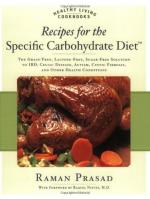|
This section contains 755 words (approx. 3 pages at 300 words per page) |

|
Overview
Lactose (LAK-tose) is a white, odorless, sweet-tasting solid commonly known as milk sugar because it occurs in the milk of many animals, primarily the mammals. The lactose content of milk ranges from about 2 to 8 percent in cows and 5 to 8 percent in human milk. Lactose occurs in two isomeric forms, α-lactose and β-lactose, with the latter somewhat sweeter than the former. The alpha form tends to occur as the monohydrate, C12H22O11·H2O.
Key Facts
Other Names:
D-lactose; milk sugar; many others
Formula:
C12H22O11
Elements:
Carbon, hydrogen, oxygen
Compound Type:
Disaccharide; carbohydrate (organic)
State:
Solid
Molecular Weight:
342.30 g/mol
Melting Point:
222.8°C (433.0°F)
Boiling Point:
Not applicable; decomposes
Solubility:
Very soluble in water; slightly soluble in ethyl alcohol; insoluble in organic solvents
How It Is Made
Lactose is synthesized in the mammary (milk-producing) glands of mammals. The milk of such animals contains an enzyme...
|
This section contains 755 words (approx. 3 pages at 300 words per page) |

|


